Between March 17 – 23, 2024, it’s Horticultural Therapy week in Canada.
As the Horticultural Therapist at Homewood Ravensview, I offer between 10 – 12 sessions/week. Many of those sessions include some form of a walking activity, like a guided forest labyrinth walk, or a walk with plant identification, or just a walk around the property to review with clients what gardening tasks have recently been accomplished, or to identify what still needs to be completed. Another reason I like to include a walk, is because it’s a reason to get clients outside, and into the fresh air!
I walk the talk away from work too. Part of my own daily therapeutic practice includes a morning walk around my community. The therapeutic benefits I have experienced from walking in a park-like setting are significant including cardiovascular exercise, cognitive and sensory stimulation, stress reduction, and a deeper connection to my community to name a few. My morning walk has also turned out to be a key source of creative inspiration. This year, to celebrate Horticultural Therapy week, I’d like to share with you something I created as a homage to my morning walk. It’s aptly called Morning Walk.
Blog
The Labyrinth in the Forest
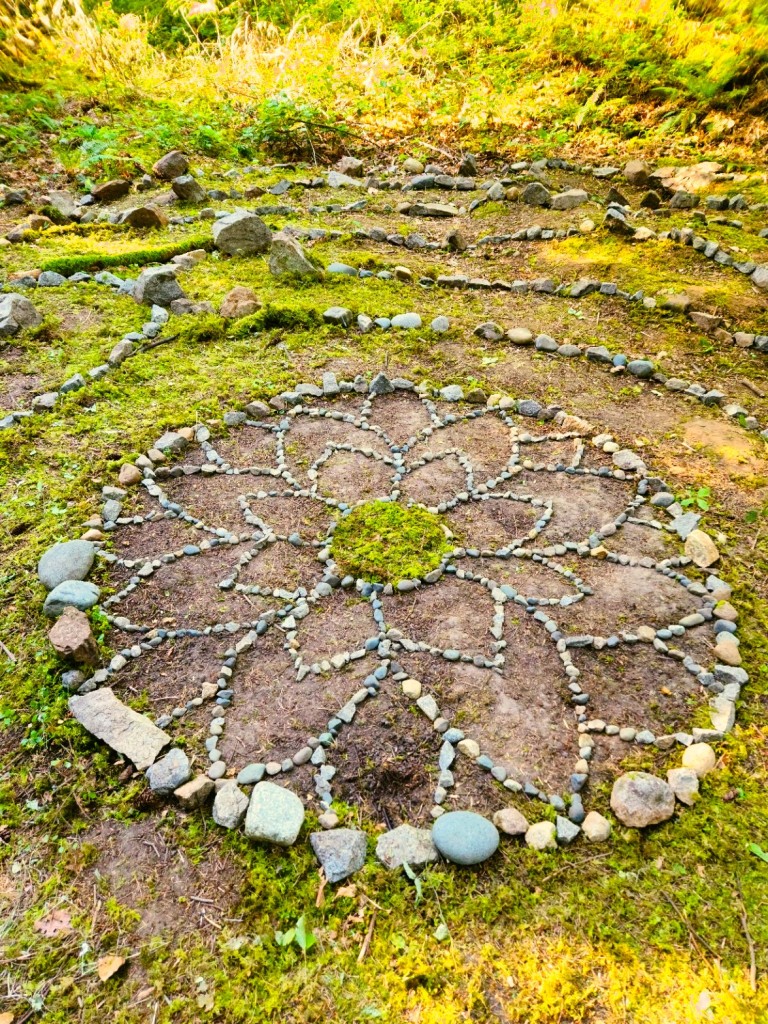
I’m approaching my first-year anniversary working as the Horticultural Therapist at Homewood Ravensview. At Ravensview, we are very fortunate to be located on 28 acres of forested hillside. The area is the traditional home to the WSÁNEĆ people and is referred to as ȽÁU,WELṈEW̱/John Dean Park. One of the primary reasons I accepted the role was I saw it as an opportunity to connect others with the local land on a deeper level. Even before I worked my first shift at Ravensview, I began dreaming of building a labyrinth somewhere on the property so clients and staff could have ongoing access to a therapeutic tool for calming the mind, relaxation, restoration, and exercise outdoors.
Labyrinths are pattens that can be found around the world. The various patterns, based on principles of sacred geometry, have been passed down through the ages for at least 4,000 years. Typically, labyrinth patterns are circular, are used for walking by feet, and can be an excellent tool for meditation. By following the one path to the center, the walker can use the labyrinth to quiet their mind, find peace, and gain insight.
I understand from my many years of coaching that dreams are very different from goals. It was one thing for me to envision a labyrinth, but for it to become a reality, it would also take planning, followed by action, and definitely help from others to build it. So, I began with small steps, and in time, those small steps became the seeds for something bigger.
My first attempts at a labyrinth took shape inside Ravensview. They were created by applying masking tape in a labyrinth-like pattern to the surface of the floor in our expressive therapy studio. Next, the clients and I experimented with creating a three-circuit labyrinth beside our herb garden outdoors. Its location and size, allows clients and staff easy access to it. Deconstructing and reconstructing this labyrinth every few months has provided new clients the opportunity to be involved in the process of constructing a labyrinth too.

Then one day, while guiding a group of clients on a forest walk, I came upon the perfect home for a labyrinth in the forest. It is a patch of flat land, clear of trees except at the perimeters where there are majestic cedar, Douglas-fir, and maple trees. In March this year, the clients and I began collecting rocks during our walks, and laying them to create a spiral labyrinth pattern. Over the next five months, we collected many more rocks, adding them to our growing spiral. Eventually, we decided to change the spiral labyrinth pattern to something more classical, expanding its size, and including more traditional back and forth turns. The turns are important because they are metaphors for the highs and lows, the joys and sorrows one experiences throughout a lifetime.
The labyrinth in the forest is now complete and is being well-used. It includes 12 turns. I haven’t counted how many rocks it contains. The plan is for each new client who comes to Ravensview, to add a rock to the forest labyrinth pattern, so they too will become part of its legacy. Other than that, our intention is to leave it as it is, and continue to walk the labyrinth while witnessing the natural changes the seasons will provide. Several times a week, I offer a guided forest labyrinth walk as part of our regular Horticultural Therapy programming for clients. It’s not just the clients and I though who have been using this labyrinth. I have noticed my colleagues heading down to walk it too. I am very proud to share with you this story, these photos, and that my dream of creating a labyrinth at Homewood Ravensview has become a goal achieved. It’s a great example to remind me any dream can become a goal achieved with hope, planning, action, the help of others, and believing in the potential of a community working together.
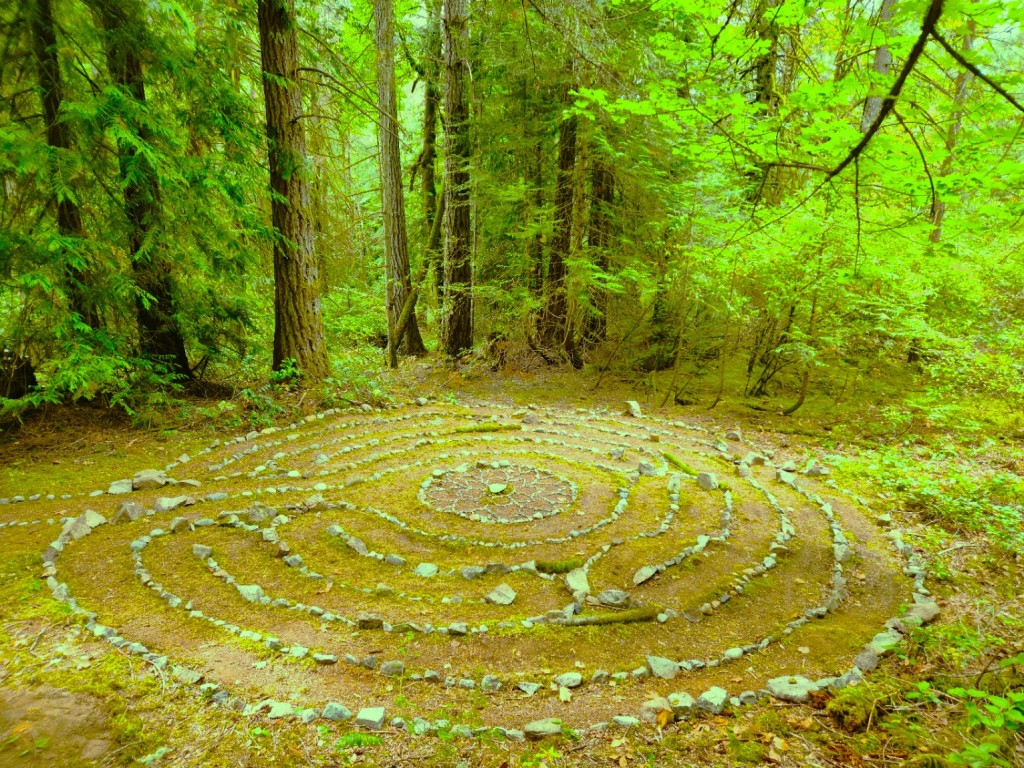
Horticultural Therapy Week
What is Horticultural Therapy?
Horticultural Therapy (HT) is a formal practice that uses plants, horticultural activities and the garden landscape to promote well-being for its participants. HT is goal orientated with defined outcomes and assessment procedures. HT sessions are administered by professionally trained horticultural therapists.
Therapeutic Horticulture (TH) is the purposeful use of plants and plant-related activities to promote health and wellness for an individual or group. Goals and defined outcomes for individual participants are not necessarily considered nor clinically documented.
Source: Canadian Horticultural Therapy Association (CHTA) 2023
Between March 19 to 25, 2023, my professional registering body, the CHTA, is celebrating Horticultural Therapy Week in Canada. In honour of the work I’m doing in the field of Horticultural Therapy at Homewood Ravensview, I would like to share with you an activity I’ve facilitated for clients. We call it Nature Bowl.
The significance of the Nature Bowl is that it is a collection of items inspired by nature, that a client can reach out, pick up, and hold in their hands during a moment of overwhelming emotion and/or dissociation. The items in the bowl help to ground the person in their body, and in the present moment through activation of their sense of touch. All of the items are locally “found”, and some come directly from the Ravensview property like the Douglas-fir bark of the tree that makes up the bowl, the conifer cones, the moss balls, and the dot-painted rocks. Clients collect the items, paint the rocks, form the moss balls, and assemble the bowls. Therapeutic outcomes include cognitive, physical, social, emotional, and creative/spirtual. Currently, we have a bowl placed in the centre of the table in each of our meeting rooms where clients engage in group therapy.
What’s your favourite strategy to connect with a plant(s) and/or nature for therapeutic benefits?
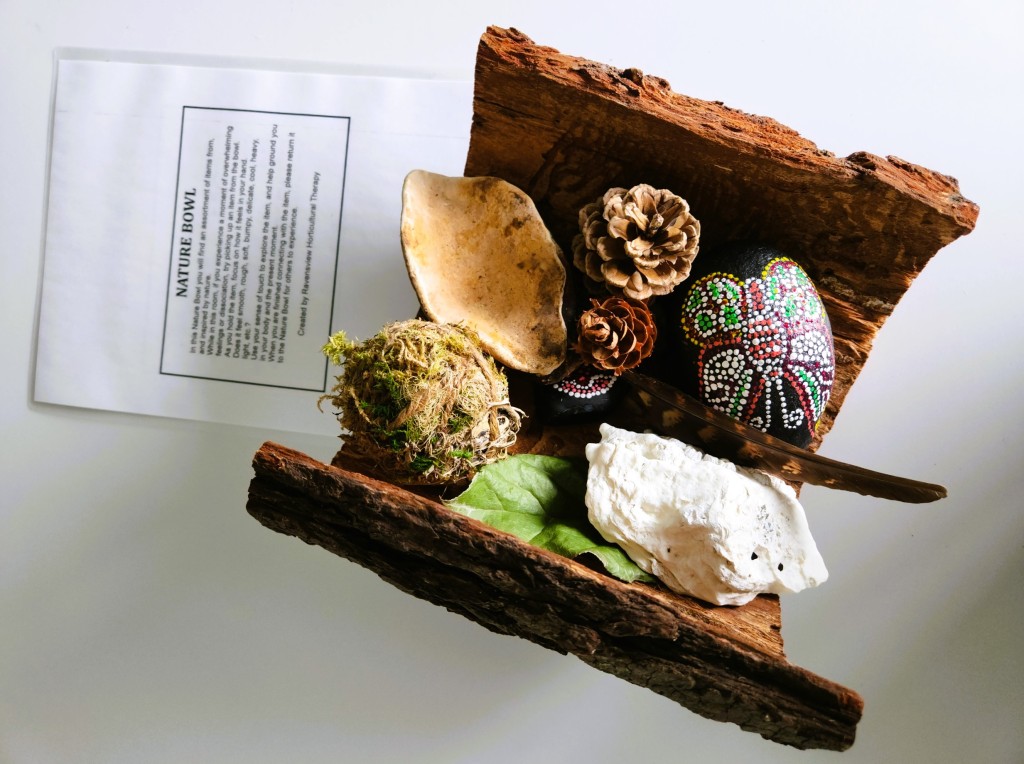
The Power of Words
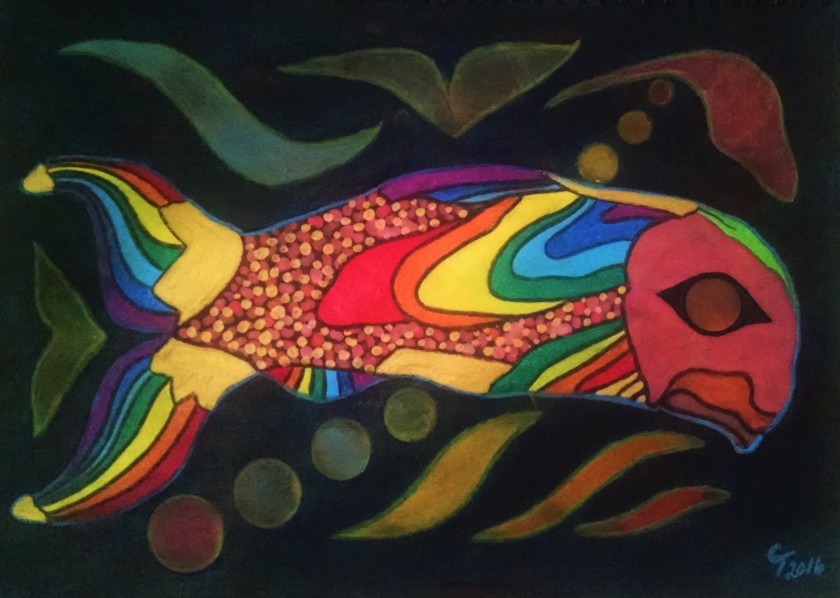
Many across Canada recognize June as Pride Month. I’m proud that in the MHFA Standard training I provide, we explore guidelines for cross-cultural competence, and communicating with the 2SLGBTQ+ community.
I’m currently doing some professional development, and was introduced to the Q Glossary, a resource that explains Queer terminology. Words can empower, acknowledge, identify, validate, promote understanding, celebrate, provide reassurance, heal, and they can be used as weapons to inflict pain, destroy, harm, divide, label, perpetuate stereotypes, predjudice and stigma.
I share this resource with you, in the hope that it can help increase your awareness too behind the power of words. Thank you QMUNITY for creating it.
If you’re interested in me providing a private MHFA Standard for your organization, please email me at cliffthorbes@shaw.ca
It’s All About the Questions
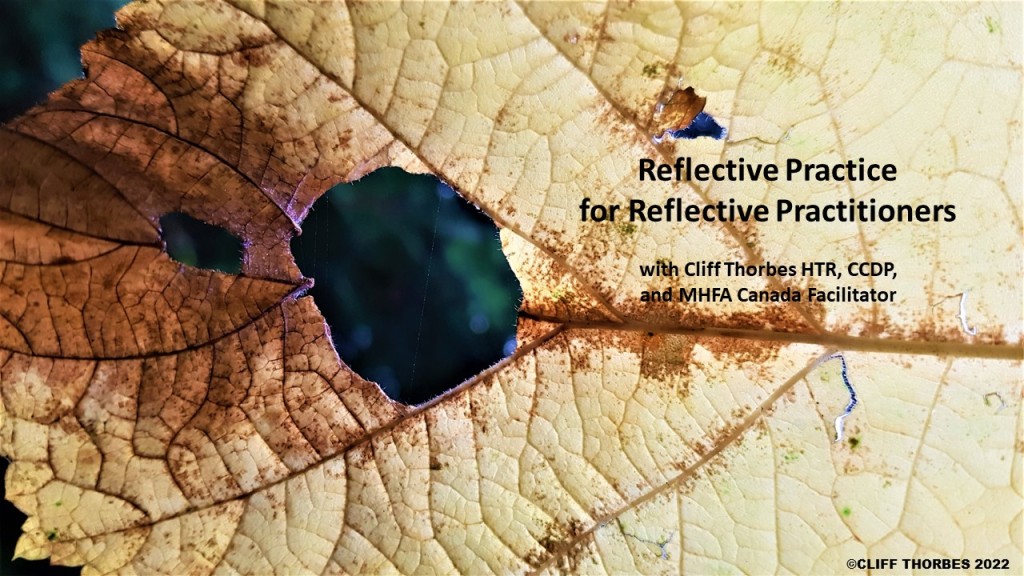
Reflective processing is about diversity of thinking and engaging your mind deliberately in order to grow and improve. It’s at the core of creativity, empathy, analysis, open-mindedness, problem solving, and goal setting. Reflective thinking is a skill used throughout one’s career, and if nurtured, and sharpened through practice, can lead to improved employability and ongoing career growth.
Most of the time, I operate on auto-pilot; following a set pattern of daily routines. From a professional perspective, reflective thinking is a purposeful way of thinking (versus daydreaming) about experiences in order to learn from them. It involves reflecting upon emotions, thoughts, and behavior at a specific moment in time, and asking questions like:
- What happened?
- Why did it happen?
- What was my role in what happened?
- Why did I do or not do something?
- How did I feel as a result of my actions or the actions of someone else?
- What did I learn from this experience?
- What will I do differently next time?
There are numerous models for reflective practice. Each with their own perspectives, strengths, weaknesses and suitability for a specific context.
Donald Schon’s Reflective Model (two points of action – reflection in action and reflection after action), is best suited to my professional role as a human services professional. I have tailored this model to meet my needs by including a third point of action – reflection before action. I believe reflective thinking completed before taking action, is a valuable learning experience in itself. For example, a best practice I follow is to spend time reflecting upon potential challenges I may encounter before providing services as a Horticultural Therapist. Considering required safety precautions before working with plant material, using tools, choosing a specific location for a guided walk, and analyzing information collected from a client’s assessments before formulating goals with them, prepares me to provide the most appropriate, safe, and client-centred services.
Gary Rolfe’s model of reflection, uses the stem questions What, So What, and Now What. This model is very simple for me to understand and apply. An example of how I apply this model is to reading a book. As I’m reading, I highlight quotes and sections of information that captivate my attention and curiosity (the what). After I’ve finished reading the book, I go back and reflect upon the material I have highlighted in order to gain a deeper understanding of its significance to me (the so what). Reflecting upon its significance a second time, plants the seeds for further exploration how I can apply it to some aspect of my life going forward (the now what).
I aspire to be a critically reflective educator. Stephen Brookfield’s four lenses Model of Reflection inspires me to grow towards that. Brookfield’s model is based upon four lens the educator must look through.
- the autobiographical lens – I reflect upon my previous experiences as a learner, including what has and hasn’t worked for me in the past.
- the students’ eyes lens – I use check-out questions and feedback surveys to help me understand how participants experience the courses and trainings I provide. From time to time, it’s important for me to be a student as well, so I can experience learning from the student’s perspective.
- the peer experience lens – I welcome feedback from my peers. Constructive feedback inspires me to hone my facilitation skills and pursue ongoing professional development.
- the theoretical literature lens – When I reflect upon pedagogic research and the sum information gained from the first three lens, I’m able to identify strategies that help me improve the content for my courses, and achieve my goal to be a reflective educator.
In my continuing education courses for Horticultural Therapy, I share with participants a model I use for resolving ethical dilemmas. It’s inspired by Graham Gibbs’ Reflective Cycle model which includes six stages of reflection including:
- Description of the experience
- Feelings and thoughts about the experience
- Evaluation of the experience, both good and bad
- Analysis to make sense of the situation
- Conclusion about what was learned and what could have been done differently
- Action plan for how to deal with similar situations in the future, or general changes that can be implemented
The model I use to help me resolve ethical dilemmas includes these seven stages:
- Recognize that an ethical dilemma exists.
- Identify all of the parties involved, the facts, relevant ethical issues, and the corresponding pertinent ethical principles. (In the context of my work as a Horticultural Therapist, I use the Horticultural Therapy Practitioner Code of Ethics in tandem with my model.)
- Examine the risks and benefits of each alternative action that can be taken.
- Choose an action based upon the outcome of an examination of the benefits and risks of each potential action.
- Take action and be willing to correct for any negative consequences that might occur as a result of the action(s) taken.
- Evaluate the results.
- Learn from the situation.
I’m preparing to launch a new continuing education course called Reflective Practice for Reflective Practitioners. It’s a course to help participants develop reflective thinking skills. Throughout the course we practice applying reflective processing through a variety of instruments like ethical dilemma resolution, metaphors, creative writing, photography, film, and personal development. Many of the activities and assignments have a horticultural and/or nature-based theme to them.
To register for this course, or any of my other trainings, you can contact me at cliffthorbes@shaw.ca.
©Cliff Thorbes 2022
autumn 2021
There’s a Japanese maple outside my front door that’s captivating my attention these days.
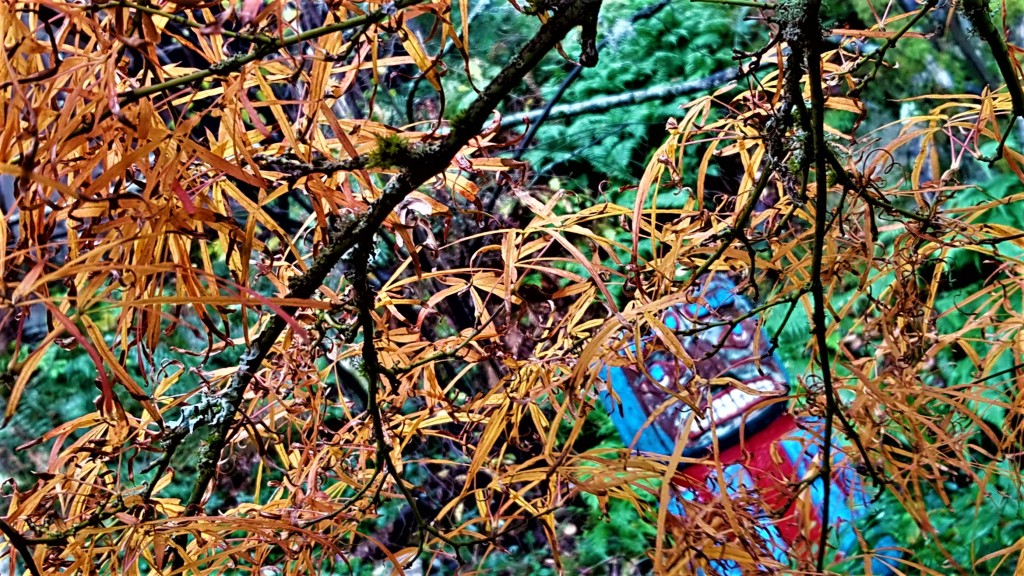
The color of the leaves is such a lovely copper-bronze.
I know the leaves won’t be here for much longer so I’m making sure to appreciate them while they are. They’re spent from spring and summer.
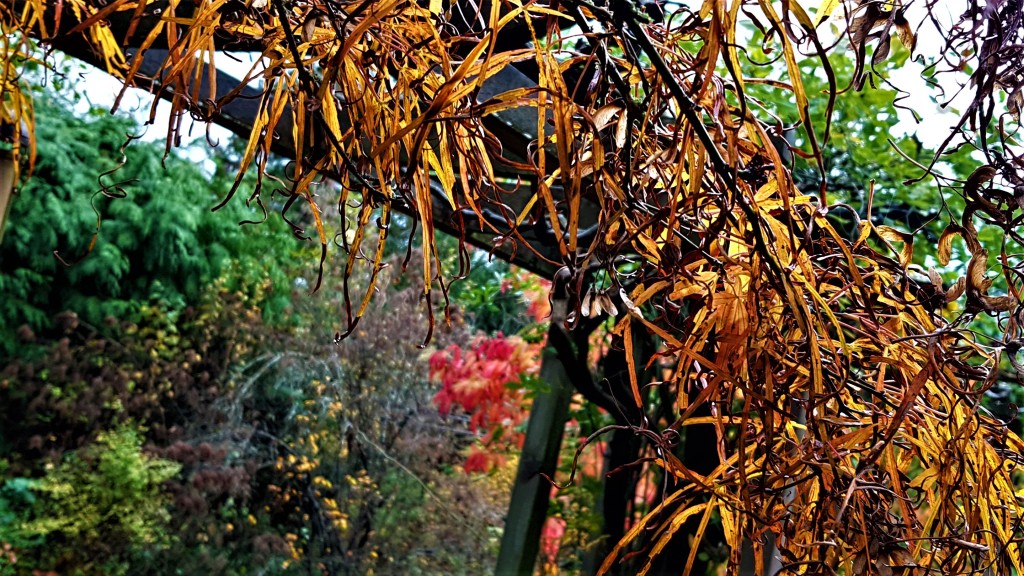
I expect the windstorm tonight will blow a good many of them to the deck below.
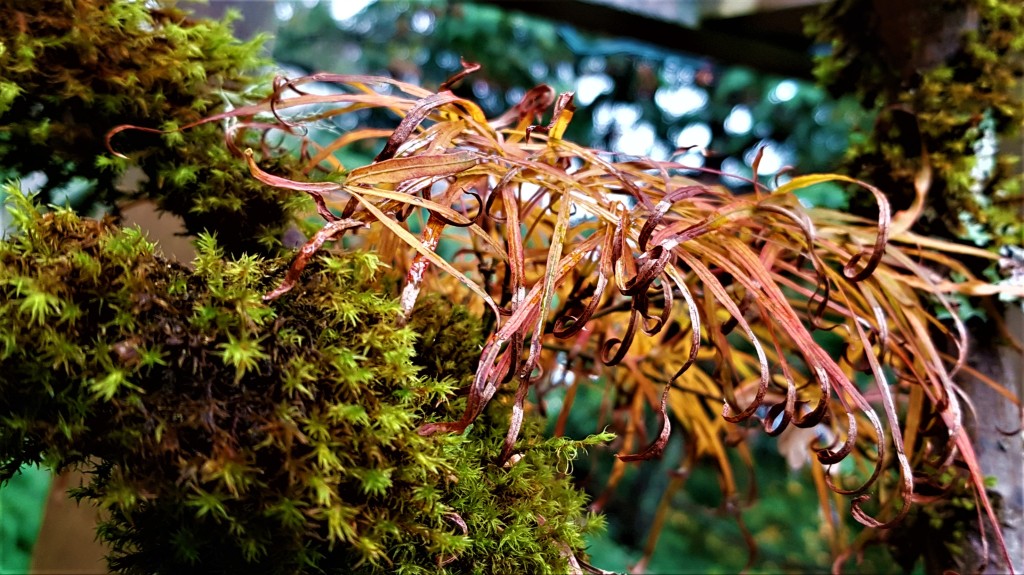
I’m looking forward to the show the moss and lichen that live on the same tree, will put on next.
©Cliff Thorbes 2022
Nature Play
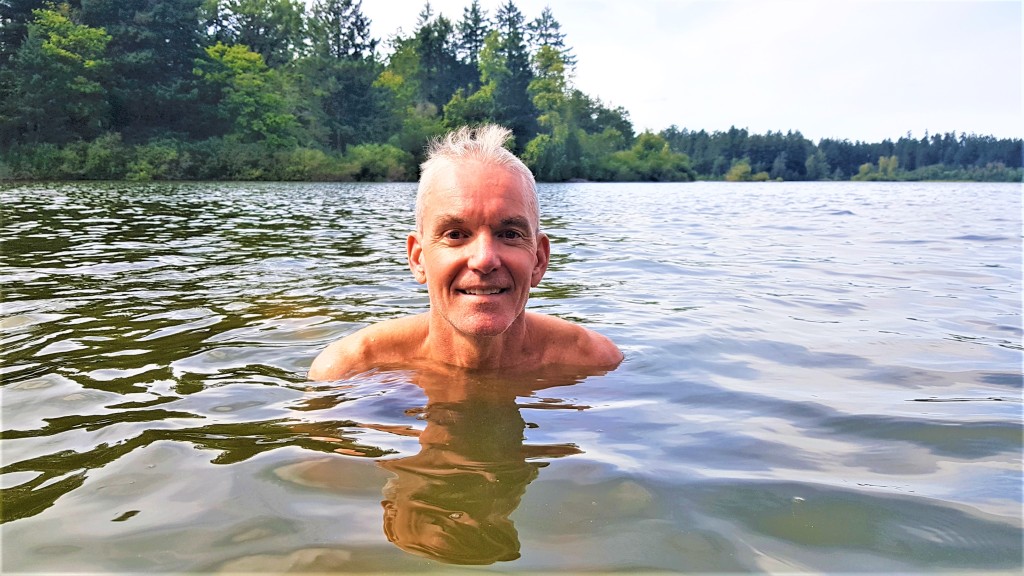
NATURE PLAY SWIM 33 of summer 2021 (Beaver Lake, Victoria BC)
Play is the business of childhood and playing outdoors in Nature brings out the child in me.
I believe it’s important to remain in touch with our inner-child throughout our lifetime.
It keeps us feeling young and provides us with precious moments of carefree abandon.
Nature Play occurs primarily outside in the natural environment and involves play with natural elements and features like water, rocks, sticks, pine cones, leaves, and shells.
Nature Play is known to promote physical, cognitive, social, and emotional health outcomes.
One of my favorite ways to experience Nature Play is swimming in the ocean or a lake.
What are your favorite ways to Nature Play?
What’s Behind a Name
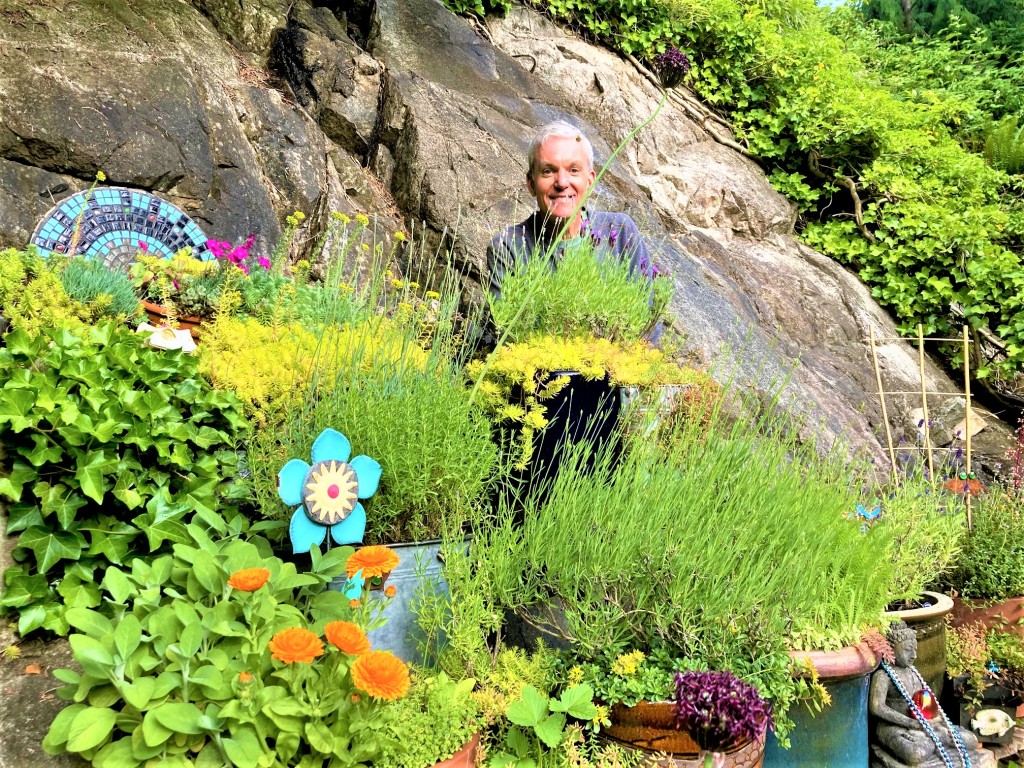
As I work towards launching my second educational course this April, Reflective Practice for Reflective Practitioners, I’ve been busy honing my own reflective thinking skills. The course will feature guest presenters and be filled with activities and assignments that provide opportunities for students to develop their own reflective thinking skills and facilitate them in others.
One activity that didn’t make it into the course line-up this time around, is the reflective writing activity, What’s Behind A Name. Like any good HT/TH professional, I would never try out an activity on anyone other than myself first. Here’s what my reflective thinking led me to discover is behind my own name.
Growing up, I cringed upon hearing it spoken. Even the short form of Clifford, Cliff, seemed to garner just as much teasing with “cliff-hanger”, or the idiom “drop over sometime”.
I longed for a simple and popular name like Christopher. It didn’t seem to draw any negative attention, and there were many successful and famous people with that name like Christopher Marlowe (poet), Christopher Isherwood (author), Christopher Reeves (actor – Superman), and Christopher Robin (character from Winnie-the-Pooh).
It wasn’t until much later in my adult life that I began to think more fondly of my name.
Clifford is an English originated name and an example of a topographic name – a name derived from a specific location, place of origin, or topographic features. My name is a combination of cliff (a steep rock face, typically at the edge of the sea) and ford (a shallow place in a river or stream allowing one to walk or drive across). That makes me a cliff-side ford.
Actually, my name is very fitting for where I live now – at the bottom of a series of cliffs in West Vancouver BC, by the ocean.
What about you? What’s behind your name?
©Cliff Thorbes 2022
Horticultural Therapy Week

We’re not out of the woods yet with the pandemic. People are experiencing more worry, stress, anxiety, and loneliness than before. To help alleviate the distress caused by the pandemic, I created this series about the many ways to connect mindfully with Nature and as a result, feel better for it.
Celebrate Horticultual Therapy Week March 14 – 21 with me and take time to really notice the Nature around you.
©Cliff Thorbes 2022
Tip Sheet for Conversations
As a Facilitator for MHFA Standard (Virtual), I train others how to have conversations with others about their mental well-being. Some older adults may be unwilling or unable to discuss how the pandemic has affected them psychologically. Here are some tips that may be useful.
